
Filter News
Area of Research
- Advanced Manufacturing (2)
- Biology and Environment (27)
- Electricity and Smart Grid (2)
- Energy Science (70)
- Functional Materials for Energy (1)
- Fusion and Fission (10)
- Fusion Energy (1)
- Materials (28)
- Materials for Computing (6)
- National Security (7)
- Neutron Science (6)
- Nuclear Science and Technology (9)
- Quantum information Science (1)
- Supercomputing (41)
News Type
News Topics
- (-) Advanced Reactors (26)
- (-) Frontier (62)
- (-) Grid (50)
- (-) Hydropower (6)
- (-) Molten Salt (5)
- (-) Polymers (23)
- 3-D Printing/Advanced Manufacturing (109)
- Artificial Intelligence (114)
- Big Data (57)
- Bioenergy (94)
- Biology (106)
- Biomedical (60)
- Biotechnology (35)
- Buildings (49)
- Chemical Sciences (72)
- Clean Water (18)
- Composites (24)
- Computer Science (178)
- Coronavirus (36)
- Critical Materials (16)
- Cybersecurity (32)
- Education (5)
- Element Discovery (1)
- Emergency (3)
- Energy Storage (77)
- Environment (162)
- Exascale Computing (66)
- Fossil Energy (7)
- Fusion (55)
- High-Performance Computing (117)
- Irradiation (1)
- Isotopes (55)
- ITER (6)
- Machine Learning (51)
- Materials (119)
- Materials Science (115)
- Mathematics (8)
- Mercury (9)
- Microelectronics (4)
- Microscopy (41)
- Nanotechnology (48)
- National Security (80)
- Neutron Science (141)
- Nuclear Energy (98)
- Partnerships (67)
- Physics (60)
- Quantum Computing (49)
- Quantum Science (81)
- Security (28)
- Simulation (54)
- Software (1)
- Space Exploration (16)
- Statistics (3)
- Summit (63)
- Transportation (62)
Media Contacts

Researchers at ORNL designed a novel polymer to bind and strengthen silica sand for binder jet additive manufacturing, a 3D-printing method used by industries for prototyping and part production.
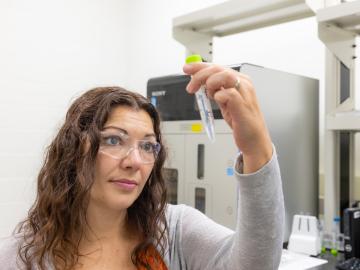
Carrie Eckert applies her skills as a synthetic biologist at ORNL to turn microorganisms into tiny factories that produce a variety of valuable fuels, chemicals and materials for the growing bioeconomy.
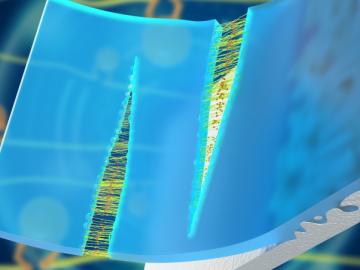
Research teams from the Department of Energy’s Oak Ridge National Laboratory and their technologies have received seven 2021 R&D 100 Awards, plus special recognition for a COVID-19-related project.
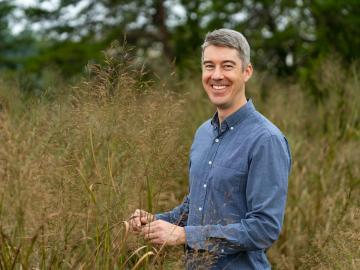
For ORNL environmental scientist and lover of the outdoors John Field, work in ecosystem modeling is a profession with tangible impacts.
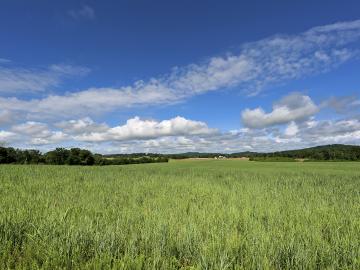
Nearly a billion acres of land in the United States is dedicated to agriculture, producing more than a trillion dollars of food products to feed the country and the world. Those same agricultural processes, however, also produced an estimated 700 million metric tons of carbon dioxide equivalent in 2018, according to the U.S. Department of Agriculture.

Pengfei Cao, a polymer chemist at ORNL, has been chosen to receive a 2021 Young Investigator Award from the Polymeric Materials: Science and Engineering Division of the American Chemical Society, or ACS PMSE.
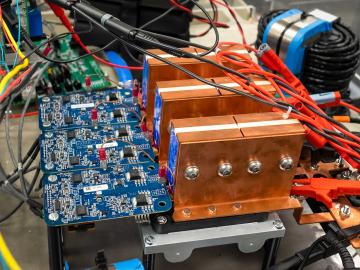
ORNL has licensed its wireless charging technology for electric vehicles to Brooklyn-based HEVO. The system provides the world’s highest power levels in the smallest package and could one day enable electric vehicles to be charged as they are driven at highway speeds.

As the United States transitions to clean energy, the country has an ambitious goal: cut carbon dioxide emissions in half by the year 2030, if not before. One of the solutions to help meet this challenge is found at ORNL as part of the Better Plants Program.

Researchers at ORNL have developed a robotic disassembly system for spent electric vehicle battery packs to safely and efficiently recycle and reuse critical materials while reducing toxic waste.

A new tool that simulates the energy profile of every building in America will give homeowners, utilities and companies a quick way to determine energy use and cost-effective retrofits that can reduce energy and carbon emissions.


